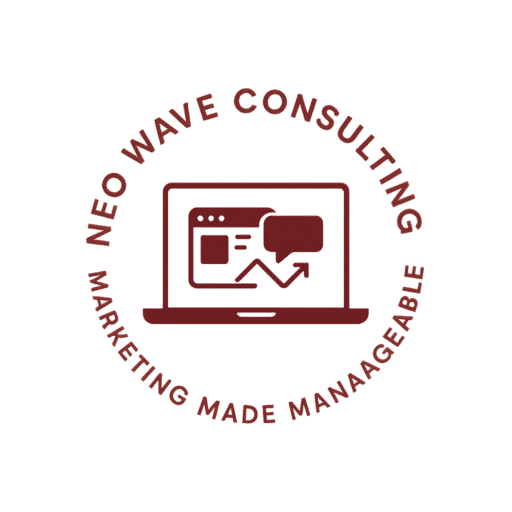TL;DR
You don’t need a big budget to get great leads. This guide shows you how to build a smart, simple sales funnel that brings in customers, even if you’re just starting out or running lean.
Sick of paying for leads that go nowhere? You’re not alone. Most businesses throw money at ads, hoping something sticks, but without a strategy, it’s just noise. The good news? You don’t need a big budget to get results. You need the right funnel, one that guides people from “Who are you?” to “Take my money.” This post gives you a simple, four-step process to build a lean funnel that actually works. No fluff. No guesswork. Just the stuff that converts.
Let’s break it down step by step, so you can start turning cold clicks into paying clients (without burning your ad budget).
Step 1 – Know Exactly Who You’re Talking To
Before you spend a single dollar on ads, get crystal clear on your ideal customer. Marketing to “everyone” is the fastest way to waste money. When you narrow your focus—even to a very small group—you speak directly to their needs and pain points. That means better engagement and lower costs.
Start by building an avatar:
- Demographics: Age, location, job role, industry.
- Challenges: What daily problems keep them up at night?
- Goals: What outcome do they want most?
- Online Habits: Which social sites or forums do they visit?
Instead of “small business owners,” think “new fitness coaches aged 25–35 who want their first 10 clients.” You can discover this info through customer surveys, social media groups, or even reviews of competing services.
Once you build that avatar, test it. Poll your audience. Ask about their biggest pain points. Watch the language they use. The more your funnel sounds like them, the more they’ll trust you.
Target your ads using these details—age, interests, behaviors. If something flops, don’t panic. Change one element at a time (like a headline or image) and try again.
Pro Tip: Use platforms like Meta Ads or Google to segment by behavior, interests, and stage of awareness. The more niche your targeting, the lower your cost per lead.
Key Takeaway: The more specific your audience, the less money you waste. Start narrow and dial in your message to convert cold leads into real opportunities.
Step 2 – Build Awareness Without Burning Cash
Now that you know who you’re talking to, it’s time to grab their attention—without draining your wallet.
Here’s how:
- Boost what’s already working: If a post is getting engagement organically, boost it for $20–$50 to a lookalike audience.
- Offer a quick win: A free checklist, 3-day email course, or quiz helps solve one small problem fast—and builds trust.
- Tap into micro-influencers: People with small but loyal followings can give your offer a personal touch and targeted reach.
- Retarget early: Install a tracking pixel so you can re-engage visitors who didn’t take action the first time.
- Test, then test again: Launch small-scale A/B tests to learn what hooks work. Once you find a winner, scale it.
It’s not about being everywhere—it’s about being smart with where and how you show up.
Key Takeaway: Small-budget campaigns can punch way above their weight when you test smart, target tight, and build on what’s already working.
Step 3 – Nurture with Value, Not Noise
Once someone signs up, your follow-up game needs to deliver. This is where trust is built—or lost.
Use a simple 4-email sequence:
- Welcome + Freebie – Deliver the promised content.
- Quick Tip – Help them solve a small problem now.
- Social Proof – Show how others got results.
- Soft Pitch – Invite them to go deeper with you.
Time these over a week. Use retargeting ads to echo what you’re saying in the inbox. If someone clicks a pricing link, send them a personalized follow-up email. And don’t send too much—4 to 6 emails over two weeks is enough.
Watch open and click-through rates. If a message falls flat, test a new subject line or content angle.
Key Takeaway: Great follow-ups aren’t about hard selling. They’re about showing up with useful info that earns you trust—and eventually, conversions.
Step 4 – Make It Easy to Say “Yes”
Your funnel’s final step should feel like the easiest one. A confusing page, too many buttons, or generic messaging kills deals.
Stick to this:
- One clear goal: Don’t distract with extra links or offers.
- Bold headline: Focus on what they get and why it matters.
- Real proof: Include a short testimonial or two. Bonus points for photos or client logos.
- Clean layout: Use your brand colors (burgundy, sand, black) and plenty of white space.
- Mobile-first: Test your page on phones. Make sure it loads fast and is easy to tap through.
- Simple form: Only ask for what you need. Fewer fields = more conversions.
Use urgency sparingly—like “Only 5 free calls left this month”—but never fake it.
Remove links, distractions, or competing goals. Focus on clarity, speed, and trust-building (social proof, guarantees, FAQs).
Key Takeaway: The less work your lead has to do, the better your conversion rate. Make your landing page smooth, simple, and built to close.
Bonus: Automation Tools That Save You Time & Budget
- MailerLite / ConvertKit – Easy drip campaigns and subscriber tagging.
- Zapier – Automate tasks like “form filled → add to email list.”
- Elementor Pro – Build sleek landing pages without touching code.
- Meta Pixel + Google Analytics – Track what’s working and retarget easily.
- GTmetrix – Make sure your page loads quickly on mobile and desktop.
Set these tools up once, then monitor results. If leads slow down, adjust only one tool or variable at a time.
Key Takeaway: Smart tools free up your time and give you consistent, trackable results—without adding to your overhead.
Conclusion: Less Spend, More Strategy = Better Leads
If you’re tired of paying for clicks that go nowhere, it’s time to rethink your funnel — not your budget. The secret isn’t in spending more. It’s in spending smarter.
👉 Need a lean funnel strategy tailored to your business? Let’s talk.


0 Comments